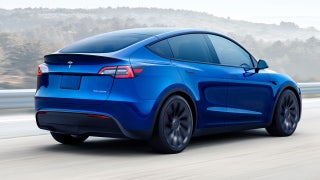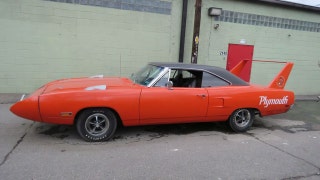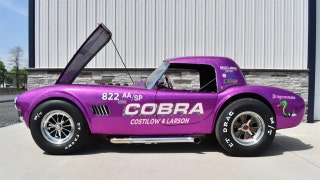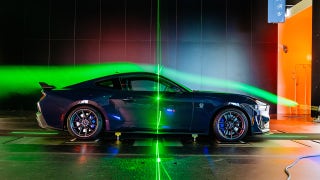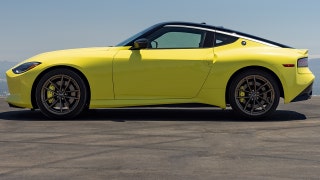Secrets of the 2023 Chevrolet Corvette Z06
Chevrolet Corvette chief engineer Josh Holder enters The Fox Garage to talk about the new 2023 Corvette Z06 and its racing-style flat-plane crank V8.
Chevrolet made the Corvette's engine smaller to make the sports car better.

2023 Chevrolet Corvette Z06 (Chevrolet)
The 2023 Corvette Z06 trades the Corvette Stingray's 6.2-liter V8 for a 5.5-liter V8 that's more powerful, even without any supercharging or turbocharging.
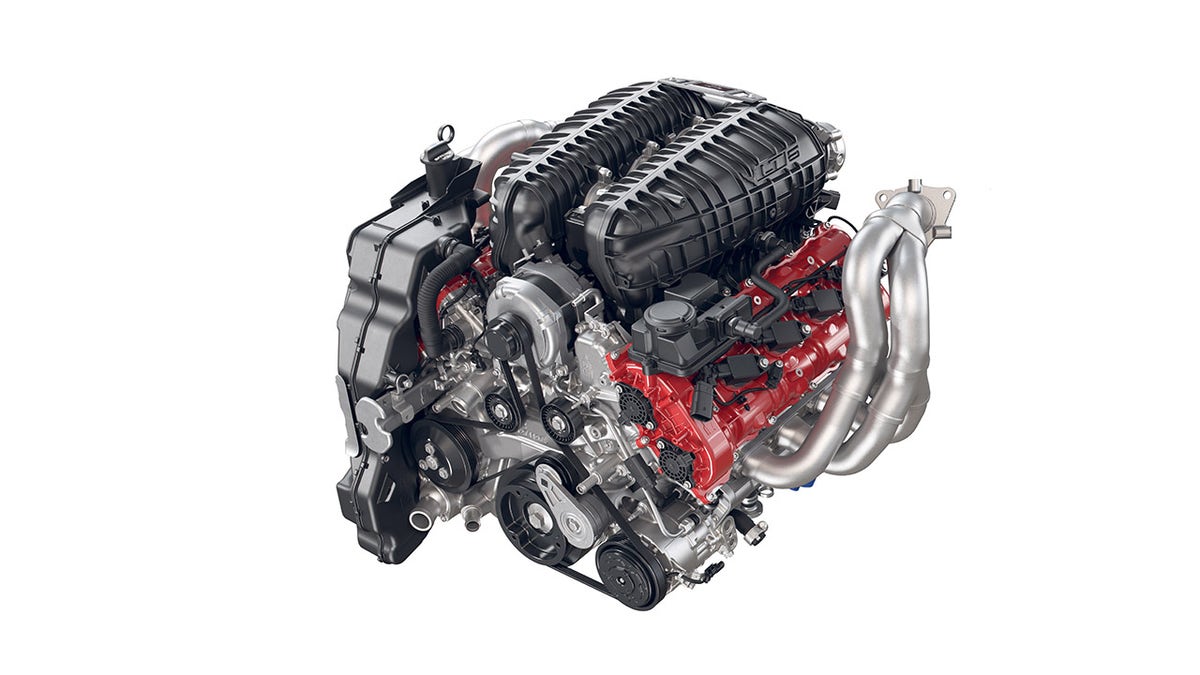
The 2023 Chevrolet Corvette Z06 is powered by the 5.5L LT6 engine, the highest horsepower, naturally-aspirated production V-8 to hit the market.
That's because it features a flat-plane crank design usually associated with racing cars or the highest performance supercars, which the Z06 aims to be.
But what exactly is a flat-plane crank?
It's all about how the pistons are attached to the crankshaft. A typical V8 uses a cross-plane crank that has the journals that the connecting rods are connected to at 90-degree angles to each other, like a plus sign, while a flat-plane crank puts them at 180-degrees. You can see the difference below.

A cross-plane crankshaft has journals separated by 90 degrees. (iStock)

The Corvette Z06's crankshaft has a flat-plane layout. (Chevrolet)
According to Corvette chief engineer Josh Holder, the cross-plane configuration requires a firing order where two cylinders on the same side fire consecutively during a cycle and breathe through same intake, which creates suboptimal airflow.
With the flat-plane crank, the firing order always alternates bank to bank, which allows the pistons to pull in air with less resistance and the engine to spin faster to produce more power.

The Corvette Stingray’s 6.2L Small Block V-8 is called the LT2. (Chevrolet)
For comparison, the Stingray's V8 generates 495 hp at 6,450 rpm and has a redline of 6,500 rpm, while the Z06's is rated at 670 hp at 8,400 rpm and tops out at 8,600 rpm, giving it the high pitched screech of an exotic.

Chevrolet calls the Corvette Z06's 5.5L V8 the LT6.
The problem is that the flat-plane crank design is less naturally balanced, so the engines tend to vibrate more, requiring pricey parts to reduce the effect.
"To keep vibration forces, shaking forces down in a flat-plane crank you need to make the reciprocating mass as light as possible," Holder explained.
"To do that on this particular engine we have a forged titanium connecting rod, those are prohibitively expensive in a more high-volume application."
Unlike the two-valve pushrod V8 in the Stingray, the Z06 engine features dual overhead camshafts with four valves per cylinder for only the second time in a Corvette engine. An over-square short stroke design maximizes the amount of area for the valve openings while reducing piston speeds, which enables high rpm running while variable valve timing and direct fuel injection further optimize its operation.

The Chevrolet Corvette-based C8.R racing car also uses a flat-plane crank 5.5-liter V8. (Chevrolet)
It's still not as smooth or quiet as a cross-plane crank V8, but Holder said that's the opposite of what a customer wants in a "visceral" car like the Z06 that's meant to evoke the experience of driving a Chevrolet Corvette C8.R racing car that has the same size and type of engine.
They're so similar, in fact, that the two engines share several parts and the Z06 V8 needs to be hand-built like the racing motor.
The result is the most powerful naturally aspirated V8 ever put into a production car, and its one that will be a relative bargain when it goes on sale next summer.
CLICK HERE TO GET THE FOX NEWS APP
Pricing hasn't been announced, but holder said customers can expect a similar step from the Stingray to the Z06 as the last generation, which could mean a price tag under $90,000 for a car that can accelerate from 0-60 mph in 2.6 seconds and sing falsetto as it does.
